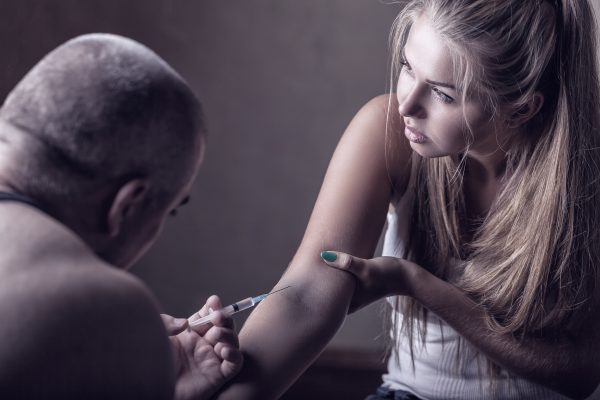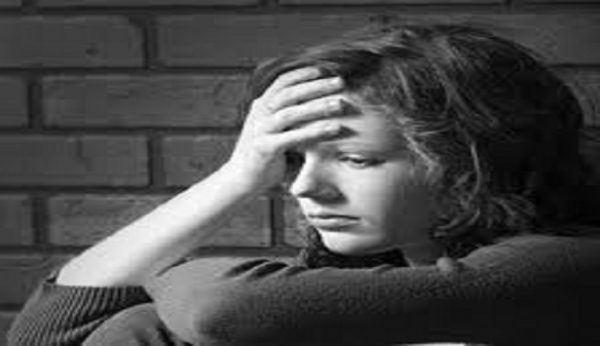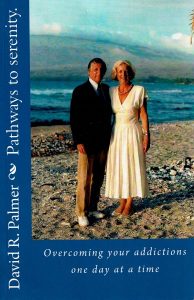
“I can hear the Weed Eater churning up dirt and grass at my neighbor’s house. The boy’s father is edging his yard and is drenched in a combination of sweat and tears.
“He takes off his safety goggles and flips the switch on the Weed Eater. He leans on the machine for support. And then, my neighbor begins shaking his head back and forth, back and forth so slowly.
“His lips are moving and while I can’t hear him, I can actually see what he’s saying. He’s saying over and over again in a mantra that arches to heaven’s breast, “He was a good boy…he was a good boy…he was a good boy.”
For this family it was a son. For others it could be a daughter
In his book How to Raise a Drug-Free Kid: The Straight Dope for Parents, Joseph A. Califano Jr. begins with a father’s lament.
“Like so many parents, we didn’t heed the warning signs. We found an empty beer bottle in the backyard, we smelled pot on his clothes, we found an unidentifiable pill in the laundry room; we chalked these things up to normal teen behavior, but we were wrong.
One day, I found his backpack sitting on the bedroom floor, the contents spilling out. Inside was the tie we had given him for Christmas. Only it was cut in half, and he had been using it as a tourniquet. Also in his bag were several bags of heroin and some syringes.
Tragically, Jim Bildner, the letter’s author, lost his son to a heroin overdose.
Califano is a grandfather, a lawyer, and a one-time Secretary of Health, Education and Welfare in the Carter cabinet who began campaigning against smoking thirty years ago. He also served as chairman emeritus of the National Center on Addiction and Substance Abuse at Columbia University (CASA), which he founded in 1992
Shortly after that, he convened a CASA conference on “How to Stop Wasting the Best and the Brightest: Substance Abuse at America’s Colleges and Universities.” Among other things revealed at the conference was that about one out of three students in the nation’s four thousand colleges abuses alcohol, the most popular drug among teens.
“The principal antidote to drug abuse in our children is early communication,” Califano concludes. “We’ve heard it before, but it must be said again: Parents have to communicate with their children earlier and more often.”
Here are eight more tips from Califano’s book:
- Be there: Get involved in your children’s lives and activities.
- Set a good example: Actions are more persuasive than words.
- Set rules and expect your children to follow them.
- Monitor your children’s whereabouts.
- Maintain family rituals, such as eating dinner together.
- Incorporate religious and spiritual practices into family life.
- Get Dad engaged—and keep him engaged.
- Engage the larger family of your children’s friends, teachers, classmates, neighbors, and the community.
Califano also provides a glossary in the back of his book to help parents understand which drugs are which and how they work. Here’s a sample:
Marijuana: particularly damaging for the developing minds of adolescents. Marijuana can impair critical cognitive function related to attention, memory and learning.
Inhalants: (popular with young teens and pre teens): Chronic use of inhalants can cause serious damage to the brain, heart, lungs, liver, and kidneys. In rare cases, abuse of inhalants can be fatal.
Ecstasy: Research has shown that ecstasy can cause long-term damage in the parts of the brain that are involved in mood, thinking, verbal memory and judgment.
Opioids: Taking a large dose of opioids at one time can cause severe respiratory depression and death.
When parents begin communicating, there is likely to be some push back from the kids regarding the parents’ qualifications for judging others and other diversions. Be prepared to answer the following questions:
“You and dad drink wine/beer/a martini with dinner. Why can’t I?”
“What’s the difference between your drinking beer and my smoking pot?”
“So long as I don’t drink and drive, what’s wrong with having a few beers at a party? All the other kids do.”
“Prescription drugs are safe. What’s so bad about using them at a party?”
“How could marijuana be bad for you if it’s just a natural herb?”
“Lots of kids on the football/basketball/soccer team/honor roll drink and smoke pot, and they’re fine.”
“Most kids who smoke cigarettes don’t smoke pot, and most kids who smoke pot don’t turn into drug addicts. I can handle it. Don’t be uptight.”
Additional information
Another source of information for parents is a report, “Treatment of Adolescents with Substance Abuse Disorders,” published by a government agency called the Substance Abuse and Mental Health Services Administration (SAMHSA).
Here is a sample of the points this publication makes:
- Adolescent users differ from adults and should receive different treatment. Adolescents tend to have smaller body sizes and lower tolerances, putting them at greater risk for alcohol-related problems. They often use drugs and alcohol for different reasons than adults and don’t see the negative consequences of their addictions as clearly.
- Programs of recovery should involve the adolescent’s family. The family has a possible role in the origins of the problem, and going forward has the ability to change the youth’s environment to suit his [or her] recovery. Also, family members usually have problems of their own that may profitably be addressed.
- Assessment should be continuous. A program for the adolescent’s recovery must begin with an assessment of where he or she is today, along with a plan of action. As time passes, new assessments should be made based on the adolescent’s progress and changes in his [or her] environment.
- The core components of most adolescent treatment programs are the same or close to it. The main components of a typical residential treatment program include an opening orientation session; a daily schedule of activities (i.e., school, chores, homework, recreation); group sessions involving peers; learning how to resolve conflicts; negotiating agreements between clients and staff called “contracts;” attending an on-site school; and vocational training.
- Substance abuse robs children of experiences which help them become mature adults. Substance abuse often insulates adolescents from gaining the experiences that are part of growing up, such as dating, marrying, bearing and raising children, establishing a career and building rewarding relationships.
- Adolescent girls often have different treatment needs. In their earliest years, female substance abusers tend, more than boys, to have experienced severe parental rejection and sexual and physical abuse. This kind of family dysfunction requires special care.
- A majority of substance abusing adolescents also need treatment for psychiatric disorders. Substance abuse and psychiatric disorders frequently go together with the label “co-existing” or “dual diagnosis.”) The most common are attention deficit/hyperactivity disorders, unipolar and bipolar depression, and anxiety disorders such as post-traumatic stress syndrome.
- Adolescents who come into contact with the juvenile justice system are likely to have severe problems in a number of areas. Substance abuse and the problems that accompany them—illegal activity, homelessness, shame surrounding sexual identity, and coexisting mental disorders—among those who have run up against the juvenile justice system require special handling.
- The risk of substance abuse in adolescents rises with a poor family environment. Lack of parenting skills, high levels of family conflict, and poor bonding between parents and children increases the chance in adolescents for substance abuse.
- Bad grades in elementary school can signal trouble ahead. Don’t let bad grades go by. Find out what’s wrong.




An intact family with a father and a mother, present in the lives of their children, sharing family meals and basic religious values seems to be the only solution. Unfortunately, the family seems to be an ever diminishing priority in our increasingly secular and Leftist world
Amen